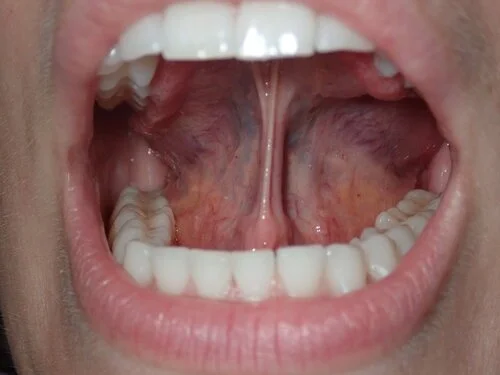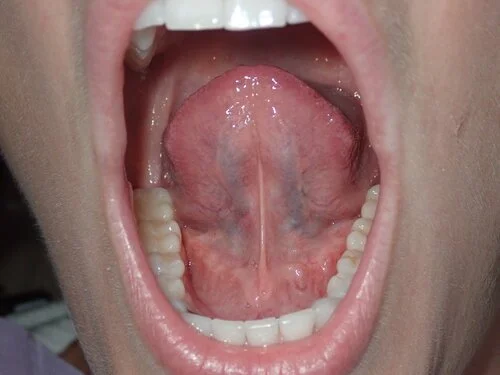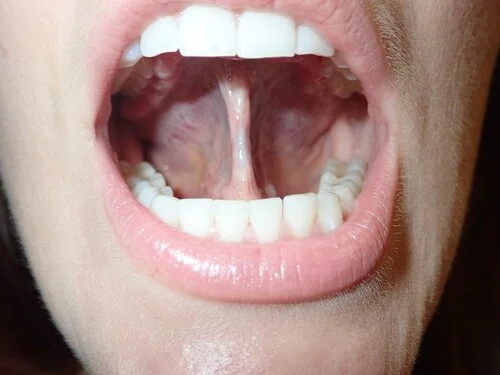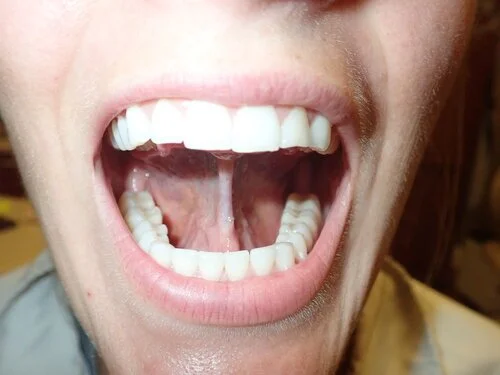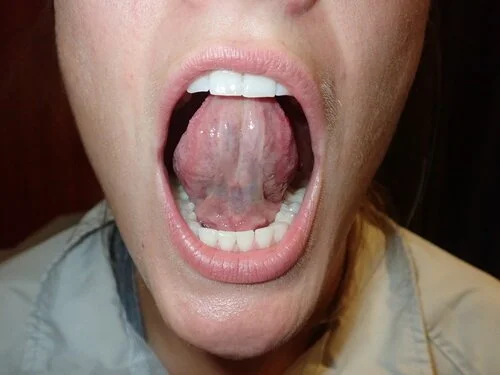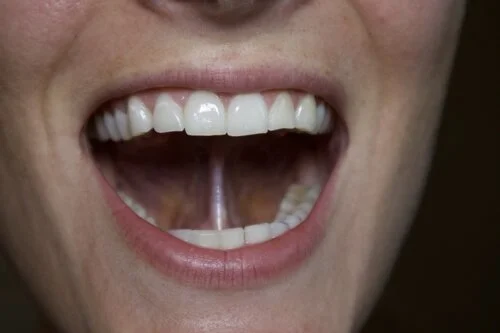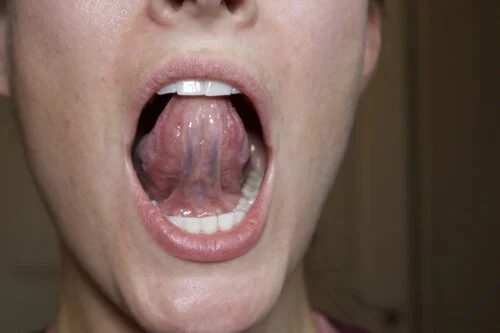Lingual Frenectomy (tongue-tie)
Treating a Tongue-Tie is Simple When You Have the Right Help!
A tongue tie used to be thought of as something that only affected babies and breastfeeding. Modern medicine and dentistry have found that tongue ties affect both children and adults. Releasing a tongue tie at any age is an integral part of achieving optimal oral and dental health.
What is a Tongue-Tie?
Also known as a restricted lingual frenum or tethered oral tissue (TOT).
The frenum is the line or band of tissue under the tongue – we all have one.
It connects the tongue to the floor of the mouth.
In some people, the frenum is:
Too tight or too short
Restricts tongue movement
Prevents it from resting in the correct place
Lips can be tied as well.
Why Does It Matter?
Your tongue should fill up the entire roof of your mouth.
This provides internal support for the upper jaw:
Helps teeth grow straighter
Promotes proper facial development
A tongue-tie keeps the tongue low in the mouth, leading to:
Mouth breathing
Chronic jaw/facial pain
Headaches
Clenching & grinding
Dental and orthodontic issues
Studies show:
Children who are tongue-tied are more likely to develop sleep apnea and airway issues.
Treating a Tongue-Tie
1. The Frenectomy
A tongue-tie is usually treated surgically.
Procedure can be called:
Frenectomy
Frenotomy
Frenulectomy
It's:
Simple
Fast
Painless
Done with a laser or scalpel by a dentist
Takes only a few minutes
Finding an experienced doctor is very important.
2. Pre-Op Exercises
Myofunctional therapy exercises are critical before surgery.
They help:
Strengthen and prepare the tongue muscles
Allow for better post-surgery movement
3. Wound Care
The mouth heals well after surgery, but:
Proper wound care is essential
Without it, the tongue may reattach the way it was before.
4. Post-op Exercises
Continued care with your Myofunctional Therapist is vital to obtaining optimal results
Tongue and oral muscles need to be retrained and strengthened after the frenum is released.
This is a case study for a Lingual Frenectomy (tongue-tie release) and the improved results that can be achieved with coordination of Orofacial Myofunctional Therapy.
A female in her mid-twenties with chronic neck tension, mouth breathing while sleeping, low oral resting posture, and waking during the night for water or to use the restroom.
Our main goals were to establish proper tongue position 24/7 and proper nasal breathing throughout the night.
Below are her clinical photos at pre-release, 2 months post-release, 6 months post, and 1 year post-release.
Prior to Lingual Frenectomy (tongue-tie release) and post 6 sessions of Myofunctional Therapy to strengthen, coordinate, and prep the tongue for release.
During the release the patient stated at one part of the procedure she felt her tongue instantly had more lift and movement along with the chronic tension in her neck felt reduced.
Two months post release with continual Myofunctional Therapy sessions to stretch and establish proper function.
6 months post Lingual Frenectomy in habituation phase of Orofacial Myofunctional Therapy.
We continued her Orofacial Myofunctional Therapy and obtained optimal results. Patients stated her shoulder tension has been greatly reduced and her sleep quality has drastically improved.
1 year post Lingual Frenectomy in completed with Orofacial Myofunctional Therapy.
If you think you may have a restricted lingual frenum (tongue-tie), please don't hesitate to contact us. We are here to provide support and assistance.
Each case is unique, and we tailor our approach based on a thorough evaluation of the specific dysfunctions involved. Your health and well-being are our top priorities.
Contact Us
Ready to get started? Fill out our contact form and let us know how we can help.
*Please note that if you’re under 18 years of age, you’ will need to have your parent(s) or legal guardian contact us.
AMW Myofunctional Therapy is NOT in contract with any insurance providers.
HSA and FSA payments are approved.




